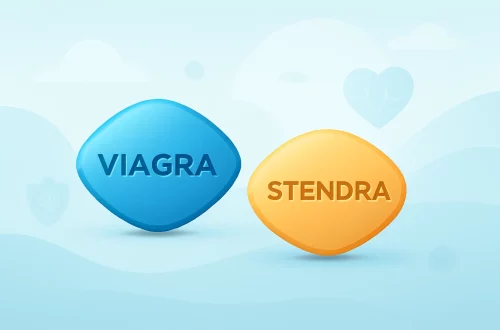-
Cyclobenzaprine vs Soma: Understanding Their Differences and Uses
Cyclobenzaprine and Soma are two medications commonly used for muscle relaxation and pain relief. Both drugs have become popular choices for individuals seeking relief from musculoskeletal conditions, but they differ in composition, mechanism of action, and potential side effects. Understanding these differences is crucial for patients and healthcare providers when determining the most appropriate treatment option. While cyclobenzaprine is often prescribed for short-term relief of muscle spasms, Soma, or carisoprodol, has its unique characteristics that set it apart. As healthcare continues to evolve, more individuals are seeking non-invasive solutions for muscle pain and spasms, leading to an increase in the use of these medications. However, the road to recovery can…
-
Tramadol vs Oxycodone: A Comprehensive Comparison of Pain Relief Options
Tramadol and oxycodone are two commonly prescribed medications used for pain relief. Both belong to the opioid class of drugs, which are known for their effectiveness in managing moderate to severe pain. However, they have different chemical structures, mechanisms of action, and potential side effects, making them suitable for different patient populations and pain management strategies. Understanding these differences is crucial for patients, caregivers, and healthcare professionals when determining the most appropriate treatment options. In recent years, the conversation surrounding opioid use has intensified, with increased awareness of the risks associated with opioid dependency and abuse. This has led to the exploration of alternative pain management therapies as well as…
-
Cyclobenzaprine vs Chlorzoxazone: Key Differences and Uses Explained
Cyclobenzaprine and chlorzoxazone are both medications commonly used to treat muscle spasms and discomfort. Although they serve similar purposes, these two drugs possess distinct properties, mechanisms of action, and side effects profiles. Understanding the nuances between cyclobenzaprine and chlorzoxazone can empower patients and healthcare providers to make informed decisions regarding treatment options. Muscle spasms can arise from various conditions, including injuries, overuse, or underlying medical issues. The sensation of tightness, pain, or restricted movement can significantly impact daily life, leading individuals to seek relief through medication. While both cyclobenzaprine and chlorzoxazone are classified as muscle relaxants, they differ in their chemical structure and how they interact with the nervous system.…
-
Cyclobenzaprine vs Carisoprodol: Which Muscle Relaxant is Better?
Cyclobenzaprine and Carisoprodol are two medications commonly prescribed for the treatment of muscle spasms and discomfort associated with musculoskeletal conditions. Both belong to a class of drugs known as muscle relaxants, which work by affecting the central nervous system to alleviate pain and improve mobility. While they share some similarities in their therapeutic use, they also have distinct differences in terms of mechanism of action, side effects, and duration of use. In an era where muscle-related issues are increasingly prevalent due to sedentary lifestyles and physical stressors, understanding these medications can empower patients and healthcare providers alike. Muscle relaxants like cyclobenzaprine and carisoprodol have become important components in managing pain…
-
Nurtec vs Emgality: A Comprehensive Comparison of Migraine Treatments
Migraine is a debilitating condition that affects millions of individuals worldwide, often leading to significant disruptions in daily life. As awareness of migraine’s impact grows, so does the demand for effective treatments. Two medications that have gained attention in recent years are Nurtec and Emgality. Both options are designed to assist those suffering from migraines, but they operate through different mechanisms and have unique properties. Understanding the nuances between these two medications can empower patients to make informed choices about their treatment plans. Factors such as onset of relief, duration of action, side effects, and the frequency of administration play a crucial role in determining which medication may be more…
-
Meloxicam vs Mobic: Understanding Their Differences and Uses
Meloxicam and Mobic are terms often encountered in discussions surrounding pain management and the treatment of inflammatory conditions. These medications belong to a class known as nonsteroidal anti-inflammatory drugs (NSAIDs), which are widely used to alleviate pain, reduce inflammation, and lower fever. Their popularity stems from their effectiveness and relatively favorable safety profiles when used appropriately. However, with the increasing availability of various NSAIDs, it can be challenging to discern the differences and similarities between these medications, particularly for patients seeking relief from chronic pain or inflammatory conditions. Understanding the mechanisms of action, potential side effects, and pharmacological properties of Meloxicam and Mobic can empower patients to make informed decisions…
-
Ibuprofen vs Mobic: Understanding Their Differences and Uses
Ibuprofen and Mobic are two widely used nonsteroidal anti-inflammatory drugs (NSAIDs) that have become staples in the management of pain and inflammation. Both medications serve essential roles in treating various conditions, but they are distinct in their chemical composition, mechanism of action, and specific uses. When considering options for pain management, understanding the differences between these two medications is crucial. Patients often face the dilemma of choosing the right medication based on their symptoms, potential side effects, and individual health conditions. While Ibuprofen has been a household name for decades, known for its effectiveness in alleviating headaches, menstrual cramps, and mild arthritis, Mobic, or meloxicam, has gained popularity for its…
-
Fentanyl Patch vs Butrans: Understanding Pain Management Options
The use of transdermal patches for pain management has gained significant attention in recent years. Among the various options available, Fentanyl patches and Butrans patches are two prominent choices. Both medications are designed to provide continuous pain relief, but they operate through different mechanisms and are indicated for varying types of pain. Understanding the nuances between these two options is crucial for patients and healthcare providers alike. Fentanyl patches deliver a potent opioid analgesic, making them suitable for managing severe pain, often associated with chronic conditions or postoperative recovery. On the other hand, Butrans patches contain buprenorphine, a partial opioid agonist that offers a different approach to pain relief. This…
-
Meloxicam vs Relafen: Which Pain Relief Option is Right for You?
Meloxicam and Relafen are two medications often prescribed for the treatment of pain and inflammation associated with various conditions, including arthritis and other musculoskeletal disorders. Both drugs belong to the class of nonsteroidal anti-inflammatory drugs (NSAIDs), which are commonly used to alleviate discomfort and improve quality of life for individuals suffering from chronic pain. While they serve similar purposes, there are distinct differences in their mechanisms of action, effectiveness, side effects, and usage guidelines that can influence a patient’s choice of treatment. Understanding these differences is crucial for both healthcare providers and patients in making informed decisions about pain management. With the rising awareness of the importance of personalized medicine,…
-
Nurtec vs Aimovig: A Comprehensive Comparison of Migraine Treatments
Migraine disorders can significantly impact the quality of life for millions of individuals worldwide. As awareness of these debilitating conditions grows, so does the demand for effective treatments. Among the myriad of options available, Nurtec and Aimovig have emerged as notable contenders in the realm of migraine management. Both medications offer unique mechanisms of action and varying approaches to alleviating migraine symptoms, which can be crucial for patients seeking relief. Understanding the differences between these two treatments is essential for anyone suffering from migraines. Not only do they have distinct properties, but they also come with different dosing regimens, side effects, and potential interactions with other medications. The choice between…







































